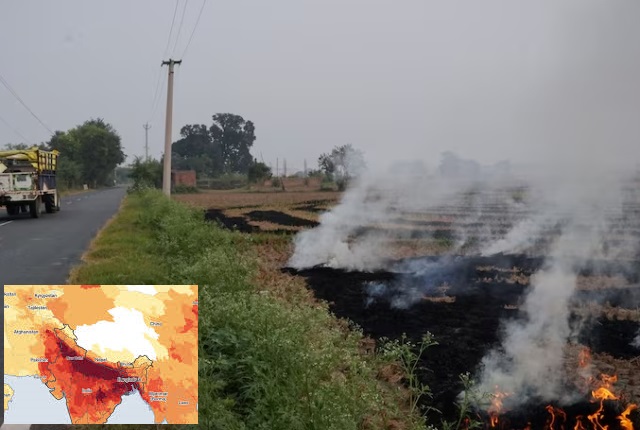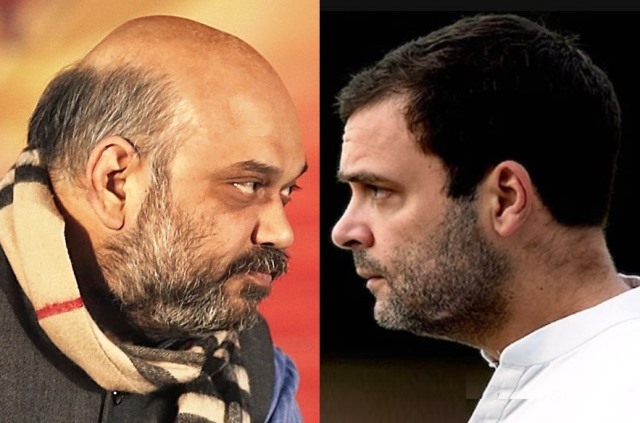
Women Power May Have Swung Polls in Nitish’s Favour
In the 2025 Bihar Assembly polls, one of the most powerful undercurrents is a mobilisation of women voters — both in numbers and in whether their ballot reflects grassroots welfare benefits or a desire for change. The first phase laid the groundwork, the second phase amplified the pressure, and now as results loom on 14 November, the verdict by women voters may well decide not just who wins, but how the political arithmetic in Bihar shifts.
For Chief Minister Nitish Kumar’s regime, the ₹10,000 bank transfers to women have become more than just policy — they have become an electoral bet on women’s loyalty. If women deliver as a bloc, the incumbents could renew their mandate; if they choose something different, the election may mark a turning point in Bihar politics where “women’s power” was the message and the messenger. As the votes for the two-phased 2025 Bihar Assembly elections tread towards their culmination on 14 November, one of the most striking sub-plots is the surge of women voters a trend that could decisively tip the balance in favour of the incumbent Nitish Kumar-led regime.
With women reportedly turning out at rates some 10 percentage-points higher than men, and with the government having channelled a special dole of ₹10,000 per beneficiary woman, the “women power” dynamic is shaping up as a potential kingmaker. The first phase of polling – held on 6 November across 121 constituencies in 18 districts – recorded a historic turnout of 64.66 %. Within that, early indications show that women’s participation outpaced that of men, a phenomenon noted across multiple districts.
What makes this surge particularly significant is that many of the seats in phase 1 had a relatively strong women-voter base. The combination of mobilisation efforts (including deployment of over 90,000 “Jeevika Didis” (women volunteers) at polling stations) and targeted welfare outreach (which the ruling alliance credits for the higher turnout) helped build momentum among female electors.
On one side, the ruling alliance claims that the higher female turnout is a reflection of their welfare policies particularly cash transfers to women’s bank accounts, free ration, and schemes focused on girl-child education and women’s livelihood. On the other side, the opposition interprets the surge as a “vote for change”.
To sum up, Phase 1 established two major facts, one, that turnout can be significantly raised in Bihar; and two, that women are now presenting themselves as a decisive electoral bloc.
The second phase held on 11 November across 122 constituencies ups the ante. Turnout climbed further to around 68.5 %. More significantly, many of the constituencies in phase 2 lie in the so-called women-leaning regions: the Seemanchal belt (Araria, Kishanganj, Katihar, Purnia, and Supaul), parts of Mithila (Madhubani) and Ang-Pradesh (Bhagalpur, Banka). In 17 of the 29 women-leaning seats that went to poll, the female share of the electorate crossed 48-49 %.
What does that mean? It means that in these seats, the women vote isn’t just marginally higher, it constitutes a sizeable chunk of the electorate, large enough to swing outcomes seat-by-seat. And given that many of these seats are contested by the ruling alliance’s strong candidates, and that the government’s welfare messaging has been targeted at women, the expectation is that women’s turnout could translate into electoral advantage for the incumbents.
From a narrative standpoint, the second phase is where the “women wave” could crystallize into results. If women are showing up in large numbers, and if their votes are motivated by schemes benefiting them directly (₹10,000 transfer, free ration, girl-child education etc.), then the fate of many seats hangs on how effectively parties have engaged this demographic.
If the women’s turnout advantage is converted into votes for the ruling alliance (led by Nitish Kumar and the Bharatiya Janata Party / Janata Dal (United)–led National Democratic Alliance), then a repeat or even an improved performance for them is highly plausible. Many exit-polls already project an NDA edge.
(Sidharth Mishra is an Author, Academic and President of the Centre for Reforms, Development & Justice)
Very well consived and thoroughly narrated the factual analysis on both phase of Bihar Assembly Elections ended on 11th. November just two days ago.
I thoroughly agreed with
your analysis focusing on massive turn out of women voters than men folks and the one and only one major reason behind such phenomenon was depositing 10 thousand rupees directly into the accounts of women voters.
I personally consider such act as a bribe with only intention and commitment to incoursge the women voters to cast their votes in favour of JDU mainly other than related to any other developmental agenda of the State.
Nevertheless, well planned tricks by Modi, Shah and above all Gyanesh Kumar, the CEC, have been duly played irrespective of massive campaign of Vote Chor Gaddi Chhod under the leadership of Mr. Rahul Gandhi with other India Block political parties.
Your views are quite boldly stated and thus highly appreciable Sir
चुनाव समाप्त हो चुका है। परिणाम जो भी हो, लेकिन इस दौरान विधानसभा नंबर 01 वाल्मीकिनगर से लेकर विधानसभा नंबर 243 चकाई तक की चुनावी यात्रा के अनुभव के बाद मैं सिर्फ इतना ही कहूंगा — संभवतः यह नीतीश कुमार का आखिरी चुनाव होगा।
2030 के अगले चुनाव में जब मैं फिर चुनावी यात्रा पर निकलूंगा, तब बिहार एक नए विकल्प और नए चेहरे की तलाश में होगा। शायद उस समय नीतीश कुमार सक्रिय राजनीति में न हों, न मुख्यमंत्री के रूप में, न ही जदयू के नेतृत्व में। उस समय बिहार की राजनीति का केंद्रबिंदु कोई और होगा।
लेकिन मैं आज यह विश्वास के साथ कहता हूं — बिहार में दूसरा नीतीश कुमार नहीं हो पाएगा।
नीतीश कुमार हमारे बीच हैं, इसलिए शायद हम अभी उनकी अहमियत को पूरी तरह महसूस नहीं कर पा रहे हैं। पर जिस दिन वे हमारे बीच नहीं रहेंगे, उस दिन पूरे बिहार की आंखों में आंसू होंगे, और हर किसी की जुबां पर एक ही बात होगी —
“आज बिहार का बेटा चला गया… आधुनिक बिहार का भाग्य-विधाता, उसका शिल्पकार चला गया।”
आज बिहार का कोई ऐसा कोना नहीं है, जहां नीतीश कुमार की छाप न हो। पश्चिमी चंपारण से लेकर किशनगंज तक, कैमूर-रोहतास से लेकर भागलपुर तक — चारों ओर विकास दिखाई देता है।
अब बिहार के किसी भी छोर से राजधानी पटना पहुंचने में तीन से चार घंटे से अधिक नहीं लगते। गांवों में बिजली की स्थिति शहर जैसी हो चुकी है, हर घर में नल का पानी उपलब्ध है।
हाईवे और पुलों के जाल ने राज्य को जोड़ा है, हर पंचायत में अब उच्च विद्यालय, अस्पताल और सुदृढ़ कानून व्यवस्था मौजूद है।
नीतीश कुमार का साइकिल वितरण मॉडल आज भी प्रेरणा देता है। कभी जो लड़कियां स्कूल नहीं जाती थीं, आज सड़कों पर साइकिल चलाकर पढ़ने जाती हैं। हर जगह पुलिस गश्त करती दिखती है, अपराध दर में भारी कमी आई है।
आज कोई व्यापारी, डॉक्टर या आम नागरिक यह डर लेकर नहीं जीता कि उससे रंगदारी मांगी जाएगी। हर व्यक्ति अब चैन की नींद सोता है, सुकून से दो रोटी खाता है, यह भरोसा लेकर कि उसका घर-संसार सुरक्षित है।
छात्रों को अब यह चिंता नहीं सताती कि अगर माता-पिता फीस न दे पाए तो वे पढ़ नहीं पाएंगे — नीतीश कुमार ने ऐसी कई योजनाएं दीं, जिन्होंने गरीबों के बच्चों को शिक्षा के अधिकार से जोड़ा।
मैंने इस यात्रा के दौरान देखा और महसूस किया — लोगों के मन में नीतीश कुमार के प्रति एक सच्चा सम्मान है, जो उनके काम और नीतियों से पैदा हुआ है।
आखिर में मैं सिर्फ इतना ही कहूंगा —
नीतीश कुमार ने बिहार में विकास की जो लकीर खींची है, आने वाले किसी भी मुख्यमंत्री को बस उसी लकीर को ईमानदारी से आगे बढ़ाना है। अगर वे इसे समय-समय पर दुरुस्त करते रहें, तो उन्हें नया कुछ करने की जरूरत नहीं पड़ेगी — क्योंकि नीतीश कुमार ने पहले ही बिहार की बुनियाद को मजबूत बना दिया है।
बाकी गिनाने के लिए हजारों काम हैं जो उन्होंने किए हैं।
नमन है ऐसे विकास पुरुष को।
और उस मां को भी नमन है, जिसने बिहार की धरती पर नीतीश कुमार जैसे बेटे को जन्म दिया।
असल में नीतीश कुमार भारत रत्न के सच्चे हकदार हैं।
उन्हें यह सम्मान मिलना चाहिए — यह केवल उनका नहीं, बल्कि नए बिहार के हर विकासप्रिय बिहारी का सम्मान होगा।
#CMNitishKumar
#JDU #Jdubihar
Sidharth Mishra कलम की ताकत सिद्धार्थ मिश्रा



